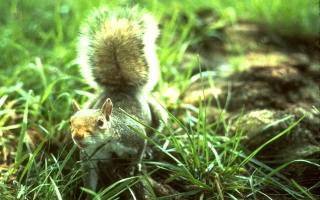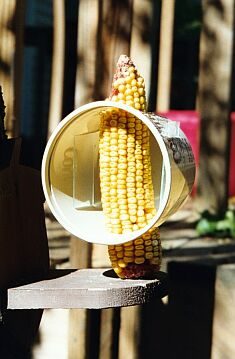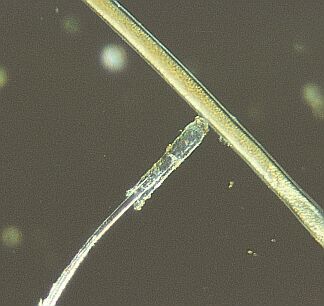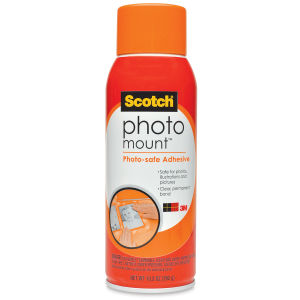This is a really amusing way to get a sample of animal hair to look at under the microsope.

You’ll need to train a squirrel to come and eat corn on the cob. It’s pretty easy. All you need to do is mount an ear of dried corn (they sell these in feed stores and bird food stores) on a nail or wood screw protruding up from a wooden base.
Once the squirrel is accustomed to coming for a meal, you surround the corn with a plastic container, like a margarine or potato salad tub. You’ll have to cut out two big holes so the corn can protrude from top and bottom.

Now here is the tricky part. You will have to make four slits as well, and these hold slides at top and bottom. One slide goes next to each side of the ear of corn. Look closely at the picture to see the slides. Before you slip the margarine tub over the corn cob, you spray a little adhesive spray onto the center of each slide. Any sticky substance will work, but I used adhesive mounting spray used for mounting photos.
After you have sprayed the center of the slides, you position the butter tub over the ear of corn and wait. The squirrel must stick his head in and rub against the adhesive. Any loose hairs or whiskers will be caught on your slides.
Carefully remove the rig once the corn is eaten, and the squirrel has been adequately paid for his or her services in the name of science. Take the slides out carefully, and do not slide them all the way through the slits, but remove them without touching the center sections containing the hair.
Now, add a drop of coverslip mounting cement like Cytoseal 60, or even a drop of clear nail polish, and position your coverslip. Let it dry.

On the left you see the squirrel whisker and root which must have been pulled out by the adhesive. Ouch! On the right, a facial hair. This photograph was made using darkfield technique.
No squirrels were harmed in this experiment, and compensation in the form of many ears of corn was subsequently accepted as tacit agreement to the study.
I hope you liked this post about collecting hair specimens from wild animals. Please comment below and share your own experiences.
